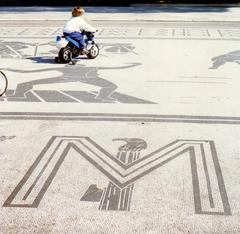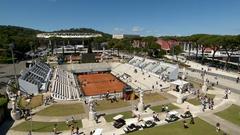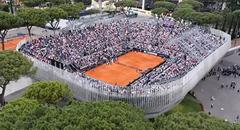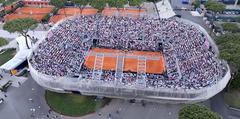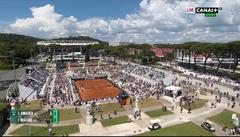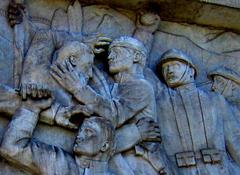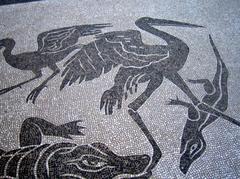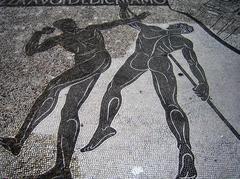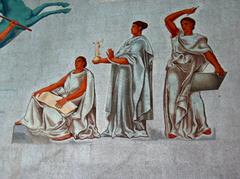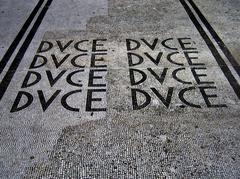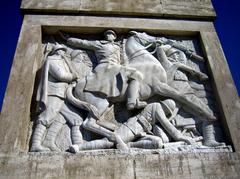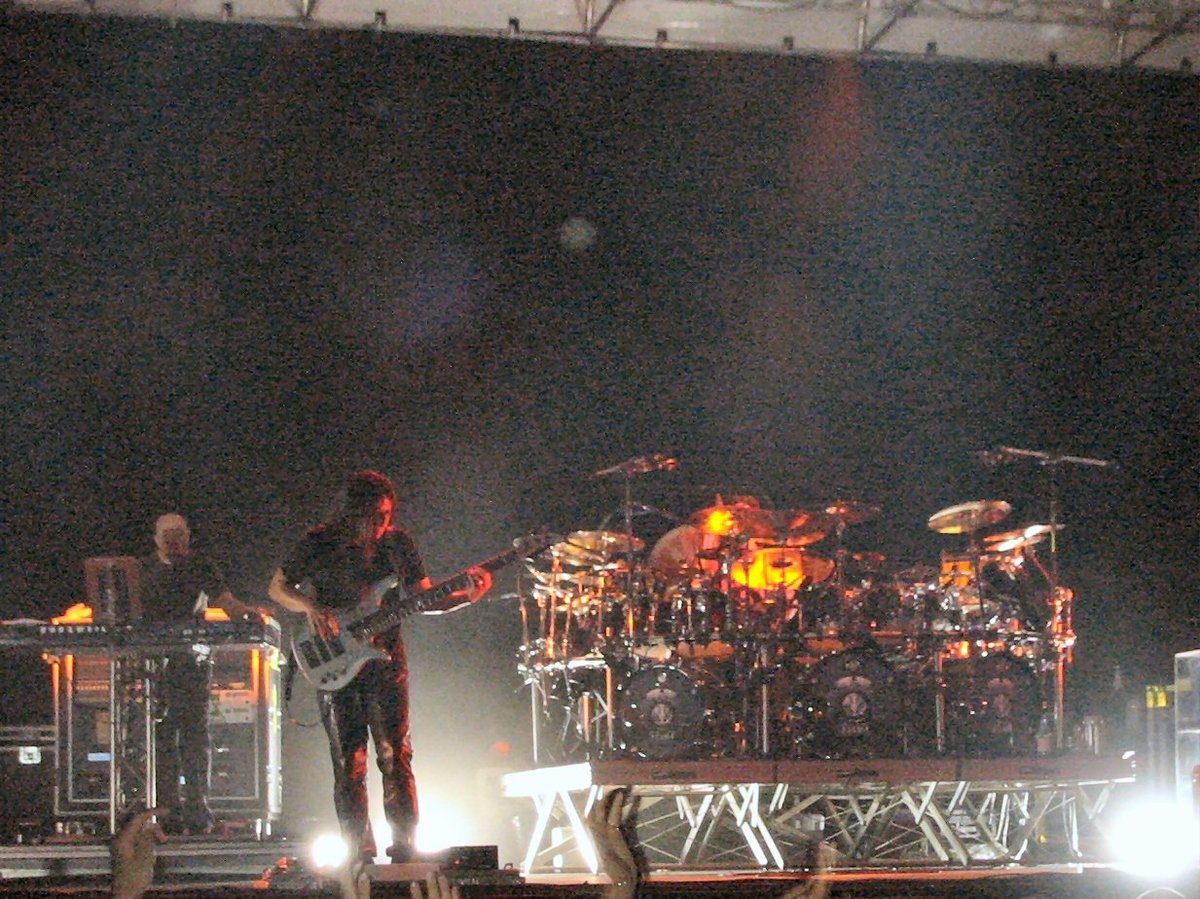
Foro Italico Rome: Visiting Hours, Tickets, and Historical Sites Guide
Date: 14/06/2025
Introduction to Foro Italico and Its Significance
Nestled along the banks of the Tiber River in northern Rome, Foro Italico stands as a monumental sports and cultural complex that fuses Italy’s rich historical heritage with a vibrant present-day sporting scene. Conceived in the late 1920s under Benito Mussolini’s Fascist regime and inaugurated in 1932 as Foro Mussolini, the complex was envisioned to project Fascist ideals through grand architecture and monumental art. Today, it is recognized both for its 20th-century urban planning and as a dynamic venue for world-class sporting events, including the renowned Italian Open tennis tournament and major football matches at the Stadio Olimpico (Lonely Planet; Wikipedia; WTA Tennis).
Foro Italico is a fascinating destination for history enthusiasts, sports fans, architecture lovers, and travelers eager to experience Rome’s unique blend of past and present. This guide provides essential information for planning your visit, including a detailed look at Foro Italico’s history, architecture, cultural importance, visitor accessibility, ticketing, and nearby attractions (Tiqets; Perfect Tennis).
Contents
- Introduction
- Origins and Fascist-Era Construction
- Architectural Features and Symbolism
- Historical Role and Major Events
- Visitor Information: Visiting Hours, Tickets, and Accessibility
- Guided Tours and Special Events
- Getting There and Travel Tips
- Nearby Attractions
- Architectural and Cultural Highlights
- Sporting Significance and Major Events
- Practical Recommendations
- Frequently Asked Questions (FAQ)
- Conclusion
- Sources
Origins and Fascist-Era Construction
The Foro Italico—originally known as Foro Mussolini—was constructed between 1928 and 1938 at the base of Monte Mario. Spearheaded by architect Enrico Del Debbio, later joined by Luigi Moretti, the complex was conceived as a showpiece of Fascist aesthetics and Italy’s aspirations for a “new Roman Empire” (Lonely Planet). Its monumental scale, symmetry, and extensive use of white marble evoke the grandeur of ancient Rome while promoting Fascist ideals of power, order, and physical culture.
After World War II, the complex was renamed Foro Italico and gradually shed its overt Fascist associations, though its architecture and symbolism remain a testament to the era’s ambitions.
Architectural Features and Symbolism
Foro Italico is celebrated for its striking blend of neoclassical motifs, Art Deco, and Rationalist styles. Key architectural elements include:
- Mussolini Obelisk: A 17.5-meter Carrara marble obelisk inscribed with “Mussolini Dux,” marking the main entrance and serving as a prominent symbol of the complex’s origins.
- Stadio dei Marmi: An oval track encircled by 59 larger-than-life marble statues of nude athletes, each donated by different Italian provinces to celebrate athleticism and regional pride (swimsallyswim.blogspot.com).
- Stadio Olimpico: The largest stadium in Rome, seating over 70,000, hosting major football and rugby events.
- Artistic Details: The entire complex integrates mosaics, sculptures, and geometric designs that echo both classical antiquity and Fascist ideology.
The campus also features the Stadio del Nuoto (Swimming Stadium), Stadio del Tennis (Central Tennis Stadium), and the Casa delle Armi, each exemplifying Italian Rationalist architecture.
Historical Role and Major Events
Foro Italico was designed as a centerpiece for the 1940 Olympic Games, a plan disrupted by World War II. Postwar, the complex became a symbol of Italian resurgence and international engagement, most notably hosting the 1960 Summer Olympics. The Stadio Olimpico remains a venue for major sporting events, including football matches for AS Roma and SS Lazio, rugby, and concerts (tenniseventguide.com).
The complex’s layered history is reflected in its ongoing use as a site for both athletic achievement and public memory.
Visitor Information: Visiting Hours, Tickets, and Accessibility
Visiting Hours: Foro Italico is generally open daily from 9:00 AM to 7:00 PM. Hours may extend during major events or vary for specific venues; always check the official website or official tourism platforms for the latest updates.
Tickets: Entry to the outdoor areas is typically free. Tickets are required for stadium access during events (like the Italian Open), guided tours, and certain exhibitions. Purchase tickets online in advance for major events to ensure availability (WTA Tennis; Tiqets).
Accessibility: The complex is wheelchair accessible, with ramps, accessible seating, and restrooms available. Contact venue staff ahead of your visit for specific assistance.
Guided Tours and Special Events
Guided tours offer in-depth exploration of Foro Italico’s art, architecture, and history, often providing access to restricted areas such as the Stadio dei Marmi and Casa delle Armi. These tours can be booked through the official site or third-party platforms (Tiqets). The annual Internazionali BNL d’Italia (Italian Open) in May is a highlight, attracting top tennis players and fans worldwide (tennisticketservice.com).
Getting There and Travel Tips
- Location: Viale del Foro Italico, 00135 Roma RM, Italy.
- By Metro/Bus: The nearest metro station is Ottaviano (Line A); from there, bus lines 32 or 280 lead directly to the complex.
- By Taxi/Car: Taxis and ride-sharing services are convenient, especially during events. Parking is limited—arrive early or use public transport during busy periods.
- Accessibility: The area is accessible for visitors with disabilities, and signage in English and Italian is available.
Nearby Attractions
Foro Italico’s location makes it easy to combine with other top Roman sites:
- Olympic Stadium: Adjacent to the complex, home to football and rugby events.
- Villa Borghese: A vast park with museums, only a short journey away.
- Castel Sant’Angelo: Historic fortress and museum, accessible by bus or taxi.
- Prati District: Offers shopping, dining, and proximity to the Vatican.
Combination tickets and guided tours are available for visitors interested in exploring multiple sites (Tiqets).
Architectural and Cultural Highlights
Stadio dei Marmi
This stadium is renowned for its 59 white Carrara marble statues, each representing a different sport and Italian province, blending neoclassical style with Fascist symbolism.
Mussolini Obelisk
A striking 17.5-meter monument at the complex’s main entrance, the obelisk is a notable example of 20th-century Italian monumental art (Tiqets).
Stadio Olimpico
The centerpiece of Foro Italico, hosting major football, rugby, and athletics events.
Stadio del Nuoto and Stadio del Tennis
Home to major aquatics competitions and the Italian Open tennis tournament, these venues combine heritage architecture with contemporary upgrades.
Casa delle Armi
Designed by Luigi Moretti, it exemplifies Italian Rationalism and now hosts sports and cultural activities.
Artistic Legacy
The complex is a living museum of Italian art and ideology, integrating mosaics, statues, and grand architectural lines into a cohesive narrative.
Sporting Significance and Major Events
Foro Italico is internationally recognized as a premier venue for sports and cultural events:
- Italian Open: One of the world’s leading clay-court tennis tournaments, attracting elite ATP and WTA players (TennisNerd).
- Stadio Olimpico Events: Hosts AS Roma and SS Lazio football matches, international rugby, and concerts.
- Walk of Fame: Since 2015, the Viale delle Olimpiadi features plaques honoring legendary Italian athletes (Wikipedia).
Practical Recommendations
- Best Time to Visit: Early mornings and late afternoons offer fewer crowds and better light for photography.
- Dress Code: Smart-casual attire is suggested, especially for high-profile events. Comfortable shoes are recommended.
- Sun Protection: Bring sunscreen, hats, and sunglasses, especially during summer or tennis events in May.
- Food and Drink: Numerous outlets serve Italian and international cuisine during events. Outside major tournaments, choices may be more limited.
- Language: Italian is primary, but English is widely spoken during international events.
- Safety: Security checks are standard during events. Medical services are available on-site.
- Families and Groups: The venue is family-friendly, with discounted tickets for children and groups. Strollers are permitted but may have restrictions in some areas.
Frequently Asked Questions (FAQ)
Q: What are the Foro Italico visiting hours?
A: Generally 9:00 AM to 7:00 PM, with variations during events. Check official sources for current hours.
Q: Is there an entrance fee?
A: Outdoor access is typically free. Tickets are required for events, guided tours, or stadium access.
Q: How can I buy tickets?
A: Purchase online via official platforms or authorized resellers like Tiqets and event-specific sites.
Q: Is Foro Italico wheelchair accessible?
A: Yes, with ramps, accessible restrooms, and reserved seating available.
Q: What’s the best way to get there?
A: Use public transport (metro and bus) or taxis; parking is limited, especially during large events.
Visuals and Interactive Elements
- Images: Stadio dei Marmi statues, Mussolini Obelisk, Stadio Olimpico, event scenes.
- Alt Text: Use descriptive alt tags such as “Marble statues of athletes at Foro Italico, Rome” or “Foro Italico visiting hours at Stadio Centrale.”
- Maps: Interactive maps showing the complex layout and nearby attractions.
- Virtual Tours: Available on official websites for pre-visit planning.
Conclusion
Foro Italico encapsulates a unique intersection of history, architecture, and sport. From its origins as a Fascist-era showpiece to its current role as a global sporting hub, it offers visitors a compelling journey through Italy’s 20th-century ambitions and contemporary vibrancy. Whether you’re admiring monumental statues, attending a world-class tennis match, or exploring Rome’s rich cultural landscape, Foro Italico is an essential stop on any Roman itinerary.
Plan your visit today, and immerse yourself in one of Rome’s most iconic and multifaceted landmarks.
Sources
- Lonely Planet
- Tiqets
- Wikipedia
- Perfect Tennis
- WTA Tennis
- swimsallyswim.blogspot.com
- tenniseventguide.com
- tennisticketservice.com
- TennisNerd

